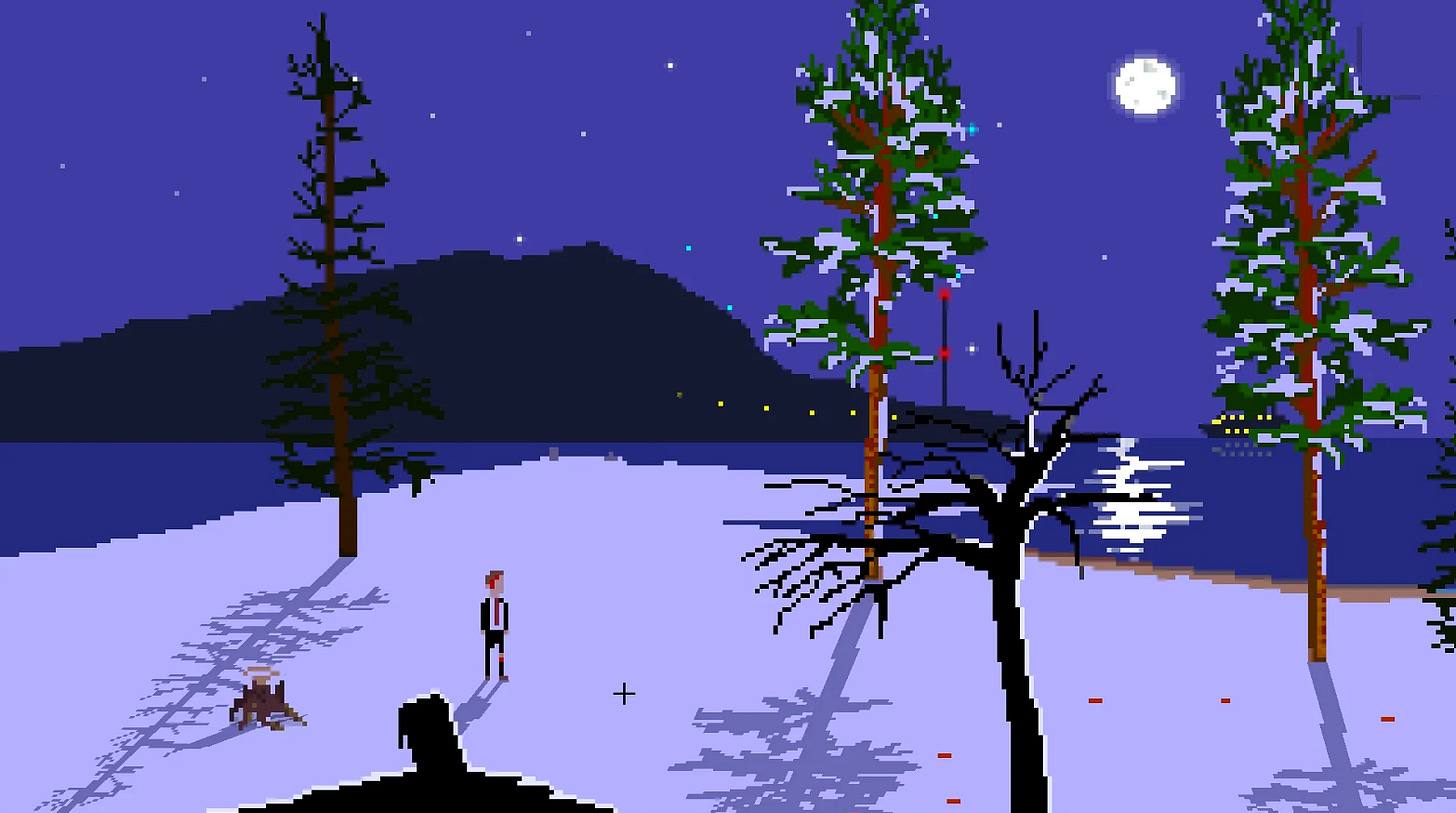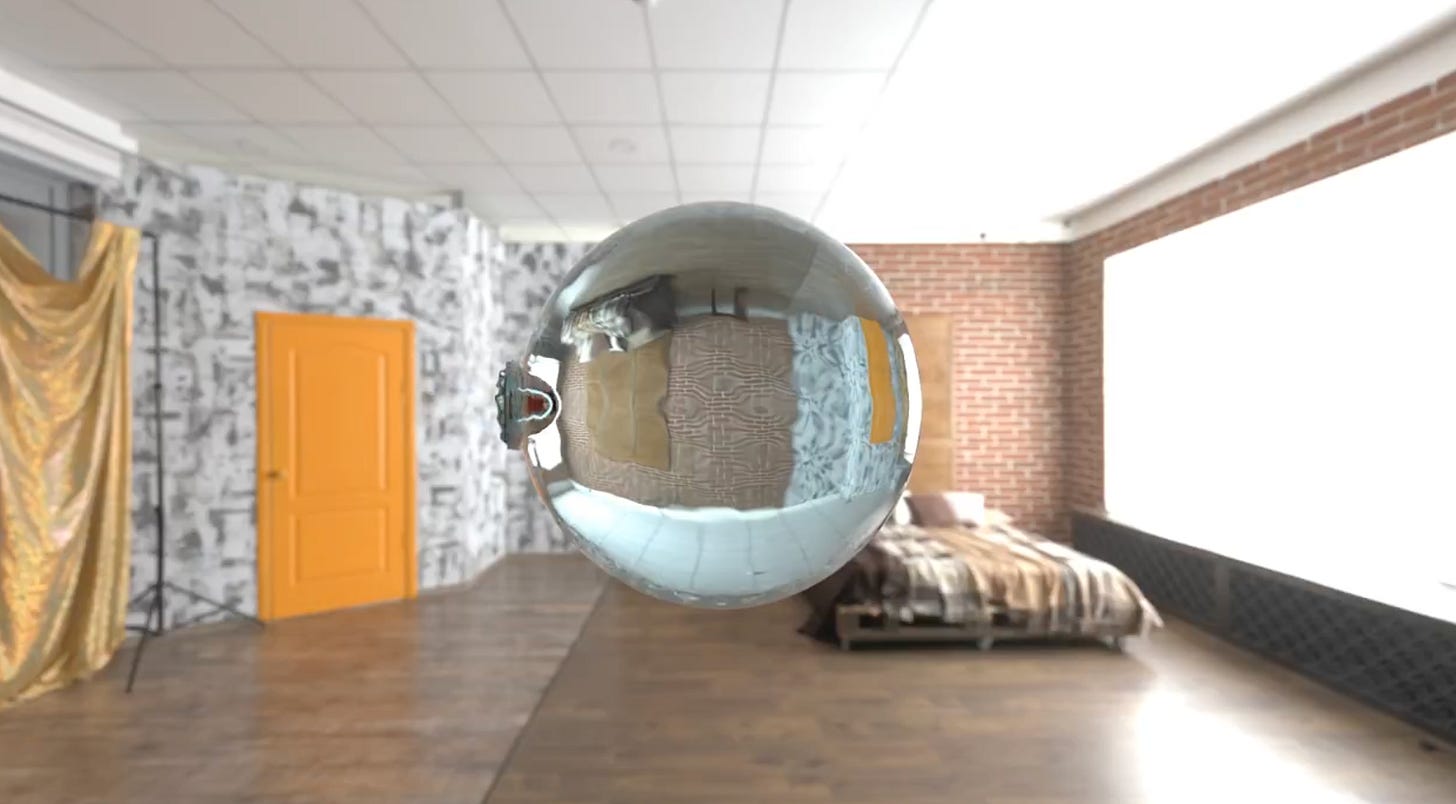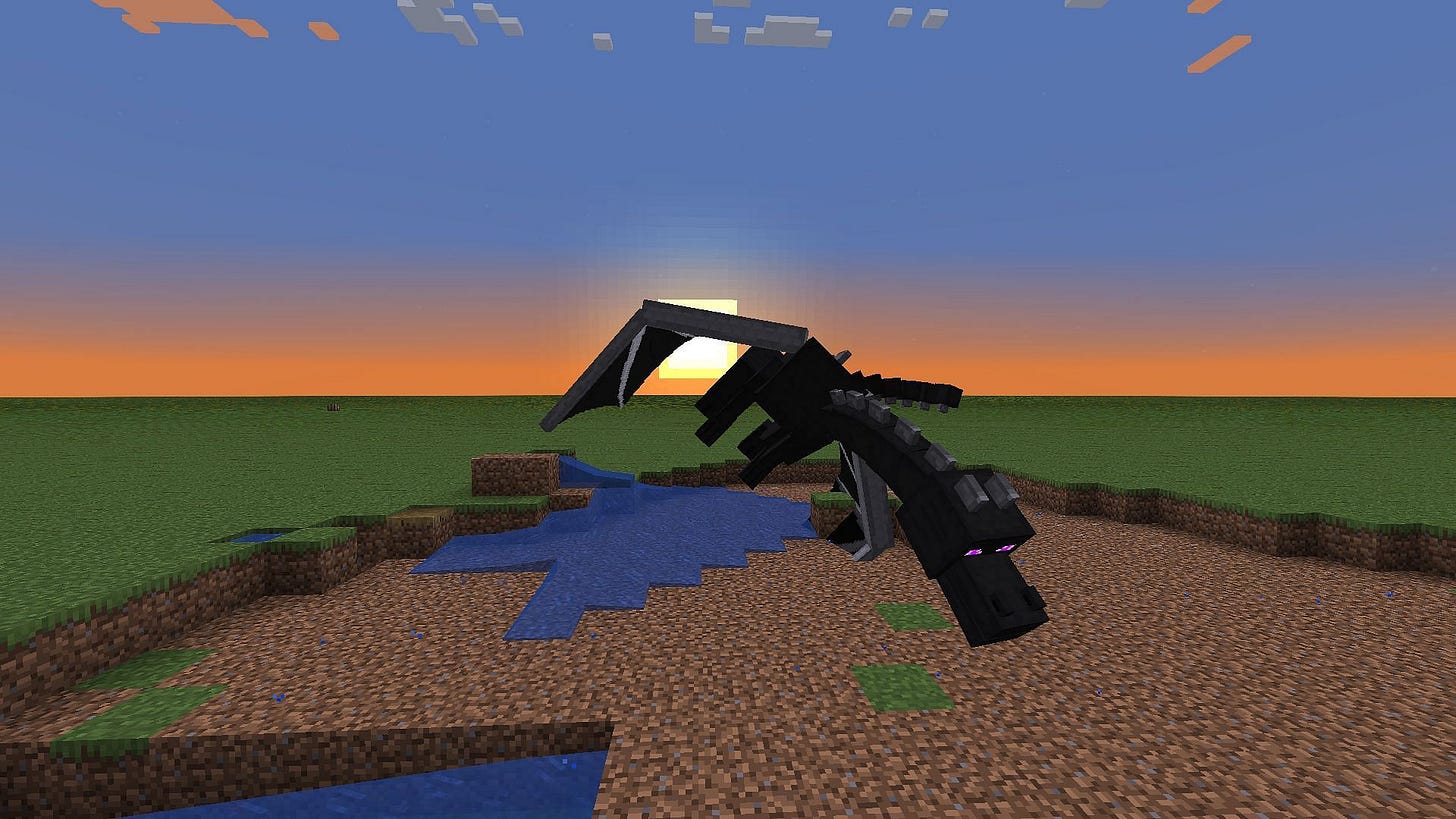This World is Sacred
On simulated worlds and spiritual transformation
Welcome to this update from New World Same Humans, a newsletter on trends, technology, and society by David Mattin.
If you’re reading this and haven’t yet subscribed, join 26,000+ curious souls on a journey to build a better future 🚀🔮
The year is drawing to a close. But before I hit pause for the Christmas break, there’s time for one last postcard.
A couple of launches caught my eye recently. Both are signals of the worlds that are to come.
Genesis is an AI-fuelled ‘generative physics engine’ that turns simple text prompts into realistic virtual worlds.
Meanwhile, Oasis is a real-time AI-generated Minecraft. It’s powered by a model trained on thousands of hours of gameplay videos; the model takes the user’s mouse and keyboard inputs and generates a 3D world on the fly. Essentially, it’s inventing the world in real-time as you play the game.
Minecraft is a big deal in my house — I have 11-year-old twin boys — so the Oasis model has turned heads over here.
Across the last few years I’ve thought, and written, a great deal about the emergence of virtual worlds. It seems to me that they are the terminal station in a long journey than began with language.
To understand what I mean, you need to understand that our technologies of representation — and language itself is the foundational technology here — don’t only describe the world for us. Their action in our lives goes far deeper than that. Language presents the world to us; it makes our experience of the world, and the form that experience takes, possible for us.
This means that when our technologies of representation change, we experience something profound. That is, a deep shift in the way we understand our ultimate relationship to the world we find ourselves in. We experience, in other words, a shift in our spiritual orientation.
The emergence of writing some 4,000 years ago fuelled the emergence of the Axial Age and the Abrahamic religions. In the beginning was the Word, and the Word was with God, and the Word was God.
But now, technologies of representation are shifting again. Via LLMs and text-to-world models, we’re turning language into virtual worlds. In one sense those virtual worlds are just another representation. But as they become more immersive and compelling, they’ll become realities in their own right.
This is the end of the journey through representations that began with language. Our representations of the world are now becoming worlds unto themselves.
I believe that in the decades ahead this will fuel another spiritual transformation. A new Axial Age for the 21st-century.
Not because we’ll all disappear into virtual worlds and live happily ever after. But because the emergence of simulated realities will in the end fuel something counter-intuitive: a new realisation that there is something special about this reality.
The truth is that this world and we humans are tied by bonds that run to the root of who we are.
There are some who say that this world may be a simulation, too. It has become a fashionable idea. There is no way to know, currently, whether it is true. Maybe it is. Maybe it is simulations all the way down.
Even if that is true, though, this world still has a special status for us — in ways that proponents of the Simulation Argument don’t always seem to understand.
Your notion of yourself, your very concept of your own personhood, is inextricably tied up with your relationship with this world as the foundation; a kind of bedrock reality. What I’m saying is that your sense of being the person you are depends on the idea of this world as bedrock. If there is some prior reality — some world that is running the simulation we live in — and if some version of ‘you’ exists in that world, then that person is not really you at all, but someone else.
As compelling virtual worlds emerge — representations that are worlds unto themselves — this truth will be made apparent in a powerful new way.
We’ll come to understand anew that there is a deep connection between we humans and this world. And that this bond is the best definition we now have of the sacred. Via our deep connection with this world, we are always and already caught up in a web of meaning.
So my advice? Over the break, be present. Renew your bonds with this world and the people in it.
Prepare yourself for the new worlds that are coming, by remembering that this world is the foundation for us. This one is sacred.
Merry Christmas everyone,
David.




Indigenous peoples and Buddhists both see us not as in this world but intrinsically a part of it and inseparable. A simulation implies we can turn it off, but we'd be turning ourselves off in the process. This ain't no holodeck! Thanks, the postcards are great so far.
“We’ll come to understand anew that there is a deep connection between we humans and this world. And that this bond is the best definition we now have of the sacred.”
For many, this understanding may arise only after the painful realization of just how much over-immersion into digital reality has dehumanized them or else somebody they love.